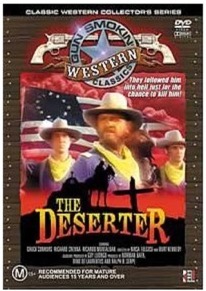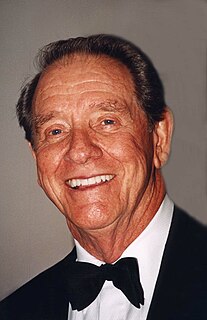
Richard Donald Crenna was an award-winning American motion picture, television, and radio actor and television director.

Bury My Heart at Wounded Knee: An Indian History of the American West is a 1970 non-fiction book by American writer Dee Brown that covers the history of Native Americans in the American West in the late nineteenth century. The book expresses details of the history of American expansionism from a point of view that is critical of its effects on the Native Americans. Brown describes Native Americans' displacement through forced relocations and years of warfare waged by the United States federal government. The government's dealings are portrayed as a continuing effort to destroy the culture, religion, and way of life of Native American peoples. Helen Hunt Jackson's 1881 book A Century of Dishonor is often considered a nineteenth-century precursor to Dee Brown's book.
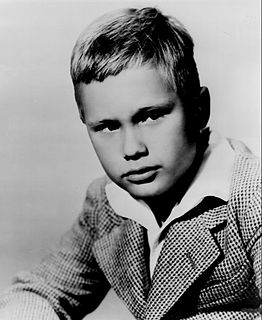
Andre Brandon deWilde was an American theater, film, and television actor. Born into a theatrical family in Brooklyn, he debuted on Broadway at the age of seven and became a national phenomenon by the time he completed his 492 performances for The Member of the Wedding. He won a Donaldson Award for his performance, becoming the youngest actor to win one, and starred in the subsequent film adaptation for which he won a Golden Globe Award.

Rio Grande is a 1950 Western film directed by John Ford, and starring John Wayne and Maureen O'Hara. The picture is the third installment of Ford's "cavalry trilogy", following two RKO Pictures releases: Fort Apache (1948) and She Wore a Yellow Ribbon (1949).

Catlow is a 1971 Western film, based on a 1963 novel of the same name by Louis L'Amour. It stars Yul Brynner as a renegade outlaw determined to pull off a Confederate gold heist. It co-stars Richard Crenna and Leonard Nimoy. Nimoy mentioned this film in both of his autobiographies because it gave him a chance to break away from his role as Spock on Star Trek. He mentioned that the time he made the film was one of the happiest of his life, even though his part was rather brief. The film contains a lot of tongue-in-cheek and sardonic humor, especially between Brynner and Crenna's characters.

Ian Edmund Bannen was a Scottish actor. He was nominated for an Academy Award for his performance in The Flight of the Phoenix (1965), as well as two BAFTA Film Awards for his performances in The Offence (1973) and Hope and Glory (1987).

Fort Huachuca is a United States Army installation, established on 3 March 1877 as Camp Huachuca. The garrison is now under the command of the United States Army Installation Management Command. It is in Cochise County, in southeast Arizona, approximately 15 miles (24 km) north of the border with Mexico and at the northern end of the Huachuca Mountains, adjacent to the town of Sierra Vista. From 1913 to 1933, the fort was the base for the "Buffalo Soldiers" of the 10th Cavalry Regiment. During the build-up of World War II, the fort had quarters for more than 25,000 male soldiers and hundreds of WACs. In the 2010 census, Fort Huachuca had a population of about 6,500 active duty soldiers, 7,400 military family members, and 5,000 civilian employees. Fort Huachuca has over 18,000 people on post during the peak working hours of 07:00 and 16:00 on weekdays.
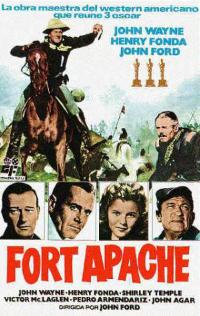
Fort Apache is a 1948 American Western film directed by John Ford and starring John Wayne and Henry Fonda. The film was the first of the director's "cavalry trilogy" and was followed by She Wore a Yellow Ribbon (1949) and Rio Grande (1950), both also starring Wayne. The screenplay was inspired by James Warner Bellah's short story "Massacre" (1947). The historical sources for "Massacre" have been attributed both to George Armstrong Custer and the Battle of Little Bighorn and to the Fetterman Fight.

Two Flags West is a 1950 Western drama set during the American Civil War, directed by Robert Wise and starring Joseph Cotten, Jeff Chandler, Linda Darnell, and Cornel Wilde. The opening credits contain the following statement:
On December 8th, 1863, President Abraham Lincoln issued a Special Proclamation, whereby Confederate Prisoners of War might gain their freedom, provided they would join the Union Army to defend the frontier West against the Indians.
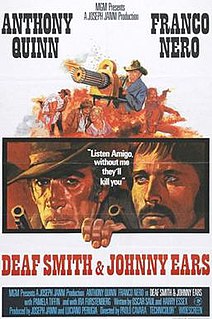
Deaf Smith & Johnny Ears, also known as Los Amigos, is a 1973 Spaghetti Western film starring Anthony Quinn and Franco Nero. The film is loosely based on the life of Deaf Smith, with direction by Paolo Cavara.
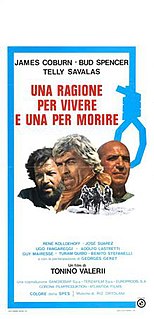
A Reason to Live, a Reason to Die is a 1972 Technicolor Italian Spaghetti Western movie starring James Coburn, Bud Spencer and Telly Savalas.

Only the Valiant, also known as Fort Invincible, is a 1951 Western film produced by William Cagney, directed by Gordon Douglas and starring Gregory Peck, Barbara Payton, and Ward Bond. The screenplay was written by Edmund H. North and Harry Brown, based on the 1943 novel of the same name by Charles Marquis Warren.
Boots and Saddles is an American Western television series created by Robert A. Cinader which aired in syndication from 1957 to 1958. “It was a lonely land then, the vast frontier held by the last scattered remnants of the once great armies that fought the Civil War. To such as these, all but forgotten, doing a dirty, thankless job, without reward or glory, the army was a way of life, the only one they knew or wanted.”
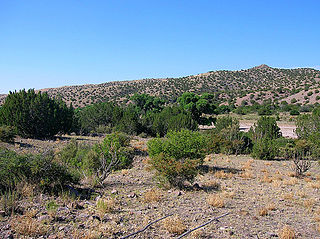
The Battle of Canada Alamosa as it was known to the Union Army, or Alamosa as it was known to the Confederates, was a skirmish of the American Civil War on the late evening of September 24 and the morning of September 25, 1861. It was one of several small battles that occurred in Confederate Arizona near the border with Union held New Mexico Territory, this one being the largest.

40 Guns to Apache Pass is a 1967 American Western film directed by William Witney and starring Audie Murphy.
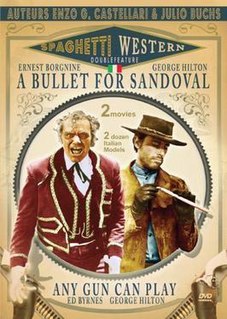
A Bullet for Sandoval is a 1969 Spaghetti Western film. It is a co-production between Italy and Spain. The film was generally well received by critics. For years, it was thought that famed Italian horror film director Lucio Fulci directed this western, but that was later disputed by the film's lead star George Hilton.
John Clark was an American actor who had minor roles in mainly western films.

Red Blood, Yellow Gold, is a 1967 Italian-Spanish Spaghetti Western film directed by Nando Cicero.

Those Dirty Dogs is a 1973 Italian-Spanish Spaghetti Western film written and directed by Giuseppe Rosati and starring Gianni Garko and Stephen Boyd. The film was made in the later part of the Spaghetti Western boom. As such it features such latter-day genre elements as self-parody, guffaw humour, near-slapstick fight scenes, machine guns hidden in everyday household items, and bombastic villains.
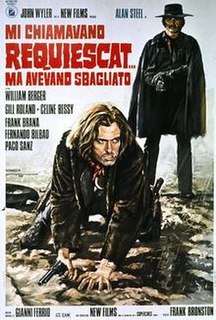
Fasthand is a 1973 Italian-Spanish Spaghetti Western film directed by Frank Bronston and starring Alan Steel, William Berger and Frank Braña.
